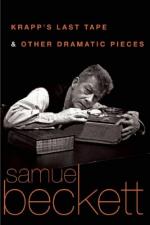|
This section contains 610 words (approx. 2 pages at 400 words per page) |

|
The 1950s is often thought of as an era where artistic expression was as "square" and as indicative of the status-quo, as the era itself is sometimes portrayed on television and in contemporary films. The 1950s were, in fact, an era where major innovations in every form of art were noticed by viewers, readers, and listeners alike. With the death of George Bernard Shaw (1856-1950), the type of "well-made play" perfected by him (one which relied on conventional forms and structures) began to be replaced in some artists' minds with more experimental forms the most famous example of which remains Beckett's own Waiting for Godot (1952), which many viewers found exciting, different, and unlike any play they had ever before seen.
The forms frequently employed in other genres of literature experienced similar reexaminations and revisions. In 1950, Ezra Pound's "Seventy Cantos" were published, which are as unlike traditional...
|
This section contains 610 words (approx. 2 pages at 400 words per page) |

|




